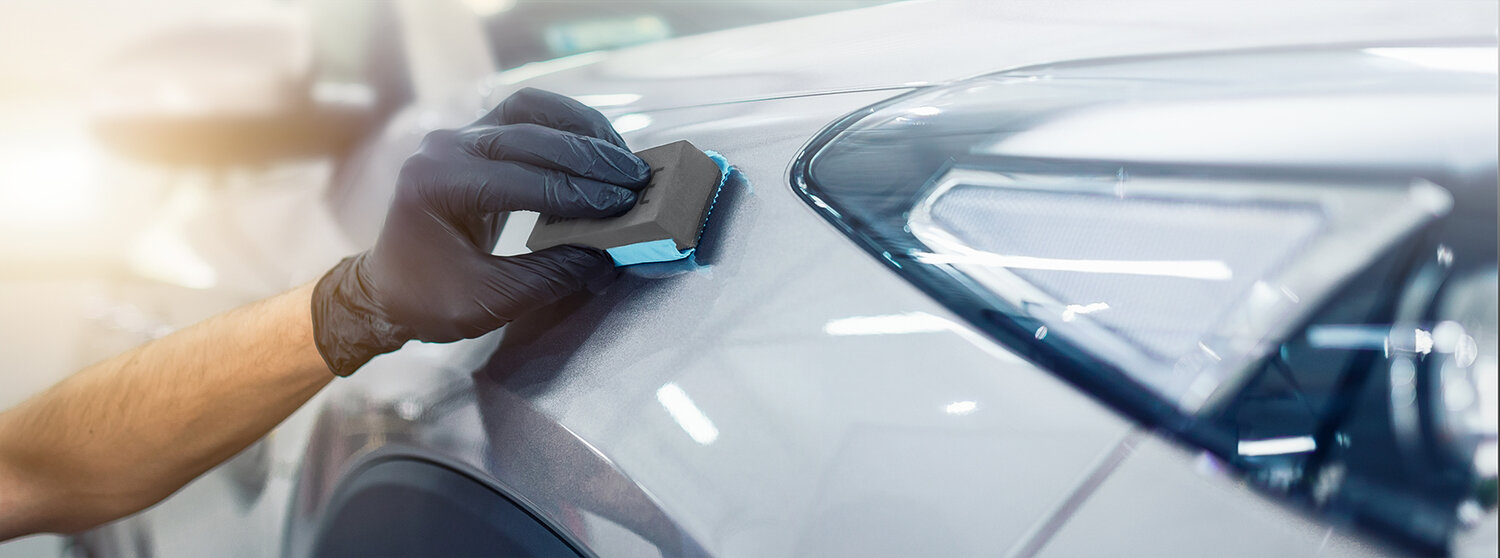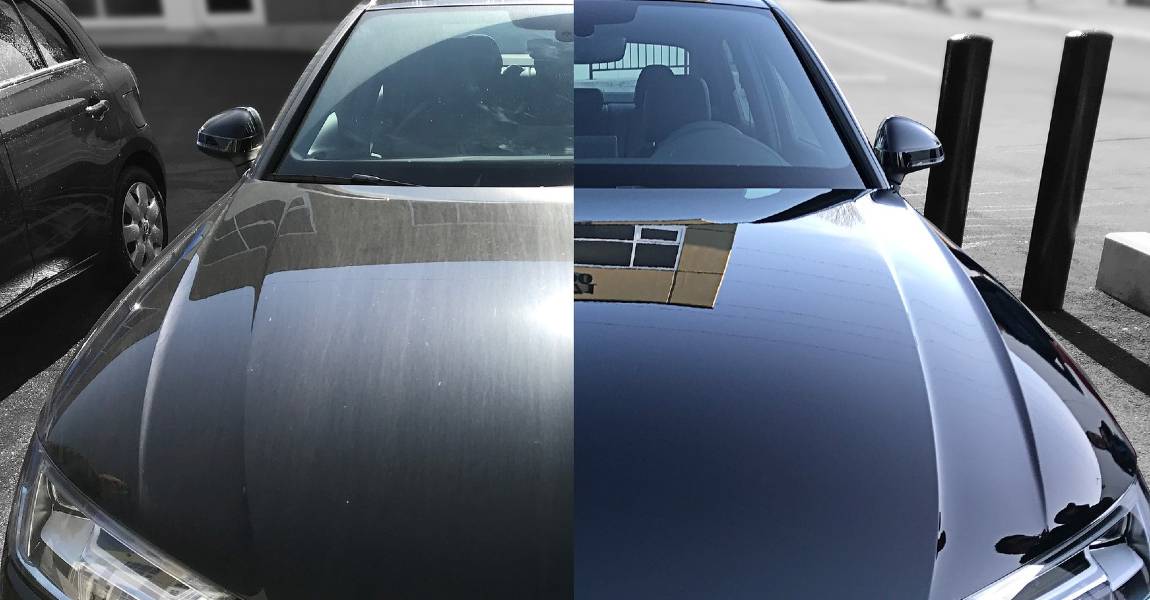Checking Out the Various Kinds of Coating for Cars: An Overview to Ceramic Options
In the realm of automotive treatment, ceramic layers have actually emerged as a substantial advancement, offering unequaled protection and aesthetic enhancement. What sets apart one ceramic layer from another, and just how do these distinctions effect long-lasting car treatment?
Understanding Ceramic Coatings
Ceramic coatings have actually become a preferred option for vehicle fanatics looking for to boost the look and shield of their automobiles. These innovative coverings are consisted of silica or silicon dioxide, which, when related to a car's exterior, develop a chemical bond with the factory paint. This bond produces a safety layer that not just enhances the gloss and deepness of the paint however additionally offers a formidable guard versus environmental pollutants such as UV rays, bird droppings, and roadway gunk.
A vital benefit of ceramic finishings is their hydrophobic properties. This means that water and other liquids grain up and roll off the surface, dramatically minimizing the chance of water spots and making the lorry less complicated to cleanse. Furthermore, the layers provide enhanced resistance to small scrapes and swirl marks, therefore protecting the lorry's excellent look gradually.
Additionally, ceramic layers are understood for their durability, often long lasting a number of years with correct upkeep (ceramic coating). Unlike conventional waxes or sealers that call for constant reapplication, ceramic finishings supply long-lasting protection, making them a cost-effective service for vehicle owners committed to preserving their vehicle's aesthetic allure and resale value

Kinds Of Ceramic Coatings
Among the myriad of safety services available, ceramic layers use a variety of kinds customized to meet varied auto needs. These innovative solutions mainly include polymer-based ceramic coverings, quartz-based layers, and crossbreed variations. Each kind is engineered to give differing degrees of protection and resilience, catering to specific user preferences and car needs.
Polymer-based ceramic finishes are renowned for their ease of application and solid protective homes. They develop a versatile, yet durable layer on the car's surface, properly protecting against minor abrasions and ecological contaminants. These layers are ideal for those looking for a balance in between performance and cost-effectiveness.
Quartz-based ceramic finishings, on the other hand, are created with silica dioxide (SiO2), supplying exceptional hardness and durability. ceramic coating. Often thought about the premium selection, they provide a remarkably high-gloss coating and robust protection against harsh ecological elements and UV damages
Hybrid ceramic coverings integrate elements from both polymer and quartz-based formulas, supplying improved flexibility. They offer remarkable hydrophobic buildings, making upkeep much easier by guaranteeing water and dirt slide off easily.
Advantages of Ceramic Coatings
One of the essential benefits of ceramic finishings exists in their capacity to dramatically boost a car's look while providing resilient protection. Ceramic finishings produce a high-gloss coating that highlights the auto's paint, offering it a smooth, polished appearance that is both striking and sophisticated. This visual upgrade is not merely shallow; the covering forms a sturdy, transparent layer that shields the paint from ecological pollutants such as UV rays, bird droppings, and acid rainfall, inevitably extending the vehicle's immaculate problem.
Moreover, ceramic layers provide premium hydrophobic buildings, making the car's surface resistant to water and dust. This hydrophobic result guarantees that water beads and rolls off the surface easily, minimizing the build-up of gunk and making the cleansing procedure significantly less complicated. This function not only conserves time however also adds to preserving the car's look between washes.
In visit this website addition, the durability of ceramic coatings is noteworthy. Unlike conventional waxes or sealers, which might require reapplication every couple of months, a high-quality ceramic layer can last a number of years with proper treatment. This sturdiness converts into cost-effectiveness, as it reduces the regularity of upkeep needed to maintain the car looking brand-new.

Application Process
To accomplish the full benefits of ceramic finishes, the application procedure have to be executed with precise interest to detail. The car's surface need to be meticulously cleaned, decontaminated, and brightened to ensure that the covering can adhere properly.
Once the surface is prepared, the ceramic covering is applied in a controlled setting, preferably indoors, to prevent contamination from dust or debris. The covering is generally applied in tiny areas using a specialized applicator, making sure an also and slim layer. It's important to comply with the item's certain guidelines concerning temperature and moisture, as these variables can dramatically influence the application and healing procedure.
After application, the finishing requires sufficient treating time. This duration permits the covering to bond effectively with the vehicle's paint, forming a durable safety layer. Depending upon the product, treating can take a number of hours to days. During this moment, it's essential to maintain the vehicle completely dry and complimentary from any impurities. Appropriate application not just enhances the finishing's durability yet additionally maximizes its safety qualities.
Upkeep and Care
After the precise application of ceramic layers, maintaining the honesty and efficiency of the coating becomes the next concern. Appropriate treatment expands the life-span of the layer, guaranteeing it continues to improve the car and secure's look.
Along with routine cleaning, regular examinations are crucial. Examine the layered surface area for any kind of indicators of wear or contamination. If impurities like tree sap or bird droppings exist, they must be promptly eliminated utilizing a gentle cleansing option to avoid etching.
It's likewise a good idea to apply a ceramic booster every few months. These items assist revitalize the covering, reinvigorating its water-repellent attributes and UV security. Auto parking in shaded areas whenever possible will certainly even more shield the coating from too much check my source UV exposure.
Final Thought
The expedition of ceramic coverings for automobiles highlights the distinctive advantages of polymer-based, quartz-based, and hybrid choices, each offering one-of-a-kind benefits in terms of toughness, protection, and application. By picking the proper kind of ceramic finishing, automobile proprietors can enhance defense against ecological damages and improve the visual allure of their cars and trucks. Understanding the application procedure and upkeep requirements additionally ensures the durability and performance of the selected layer, making it an important financial investment in vehicle care and conservation.
Ceramic layers have emerged as a prominent selection for vehicle lovers looking for to protect and enhance the appearance of their automobiles. These innovative solutions mainly include polymer-based ceramic coverings, quartz-based coverings, and crossbreed variants.After the careful application of ceramic layers, preserving the integrity and efficiency of the layer comes to be the following top priority.The exploration of ceramic finishings for automobiles highlights the distinctive benefits of polymer-based, quartz-based, and crossbreed choices, each offering special benefits in terms of defense, toughness, and application. By picking the proper type of ceramic coating, vehicle proprietors can boost security against environmental damages click for info and boost the visual charm of their automobiles.